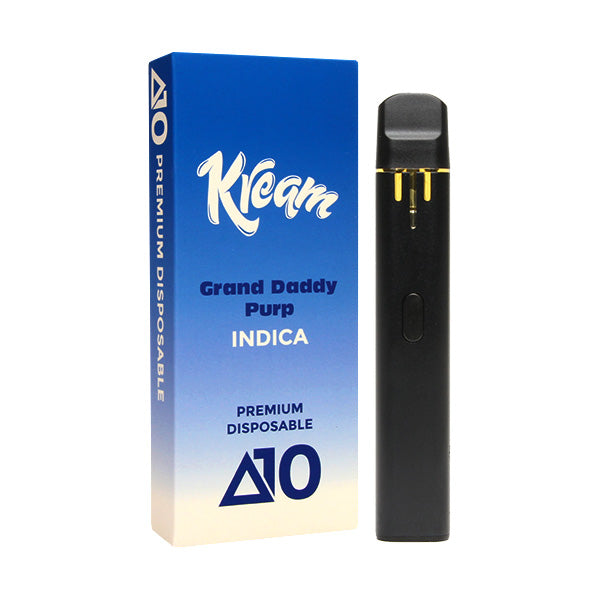Unveiling the Ultimate Kream Disposable: Your Hassle-free and Delicious Vaping Companion
Unveiling the Ultimate Kream Disposable: Your Hassle-free and Delicious Vaping Companion
Blog Article
Exploring the Environmental Influence of Disposable Vape Pens: What You Need to Know
In the world of disposable vape pens, a better examination of their ecological influence discloses a complicated internet of interconnected elements that warrant our focus. From the manufacturing procedures and products made use of to their eventual disposal and influence on air high quality, the ramifications of these seemingly convenient devices expand far past their instant usage. Comprehending the full extent of their ecological footprint is critical for making informed choices concerning our intake behaviors and the potential options available.
Production Procedures and Materials
Non reusable vape pens are commonly made using a variety of materials and procedures that can have considerable environmental implications. The main parts of non reusable vape pens include a battery, home heating element, e-liquid storage tank, and a mouth piece. The battery is frequently made of lithium, a non-renewable resource that requires substantial energy to remove and process. The e-liquid storage tank is generally made from plastic, including in the ecological worry because of its non-biodegradable nature. The burner, usually made from metal alloys, also adds to the ecological influence with the extraction and handling of raw materials.
Additionally, the manufacturing procedures included in creating disposable vape pens can additionally worsen their ecological impact. Making use of plastics, steels, and chemicals in the production procedure causes greenhouse gas emissions, energy usage, and waste generation. Furthermore, the transport of resources and finished items adds to the overall carbon impact of non reusable vape pens. Considering these factors, it is important for producers and customers to be conscious of the environmental repercussions related to the manufacturing and use non reusable vape pens.
Energy Intake in Manufacturing
During the production process of non reusable vape pens, the power usage entailed plays a considerable duty in establishing their overall ecological impact. The production of non reusable vape pens calls for power for numerous phases, consisting of removal and handling of raw products, manufacturing elements like batteries and heating components, transport, packaging, and assembly.
To attend to the environmental implications of power intake in production, suppliers can adopt a lot more sustainable techniques. This can include using renewable resource resources for manufacturing procedures, enhancing manufacturing procedures to decrease energy waste, and executing energy-efficient innovations. By prioritizing energy effectiveness and sustainability in manufacturing, the environmental effect of non reusable vape pens can be decreased, adding to a greener and even more accountable vaping market.
Disposal and Waste Administration

Disposable vape pens consist of elements such as batteries, electronic circuits, and plastic casings that can be harmful otherwise taken care of appropriately (kream disposable). The lithium-ion batteries in vape pens, as an example, pose a substantial threat if they finish up in garbage dumps, as they can leak hazardous compounds into the dirt and water system
Recycling programs especially created for electronic waste needs to be advertised to motivate individuals to recycle their non reusable vape pens properly. By improving disposal techniques and waste administration techniques, the ecological effect of disposable vape pens can be significantly minimized.
Influence On Air Quality
The presence of non reusable vape pens adds to the destruction of air top quality in metropolitan environments where their use prevails. They launch damaging materials into the air when people make use of non reusable vape pens. These gadgets send out volatile natural substances (VOCs) like formaldehyde, acrolein, and acetaldehyde, in addition to ultrafine bits that can pass through deep right into the lungs. These exhausts can respond with various other contaminants in the ambience, forming additional contaminants that present risks to human health and the atmosphere. kream disposable.
In addition, the disposal of vape pen batteries, which commonly consist of hefty metals like lithium, nickel, and cobalt, can lead to air contamination if not taken care of find more appropriately. Improper disposal approaches, such as incineration or landfilling, can release these toxic metals right into the air, adding to air pollution and potentially creating harm to human health.
To mitigate the influence of disposable vape pens on air high quality, promoting awareness concerning proper disposal methods, urging recycling programs for vape pens and batteries, and educating customers about the environmental effects of these tools are vital steps in reducing their environmental impact.
Alternatives and Lasting Choices
Due to the ecological influence posed by disposable vape pens, discovering options and lasting options is necessary for lowering environmental damage. One sustainable alternative is to switch to refillable vape pens that enable customers to reenergize the gadget with e-liquid, substantially lowering the amount of waste produced. These refillable pens commonly have longer life expectancies, leading to fewer devices ending up in garbage dumps. Furthermore, choosing vape pens made from recyclable products can even more minimize the ecological impact. Suppliers Click This Link are progressively supplying environmentally friendly options, such as pens constructed from recycled steels or biodegradable plastics.
Furthermore, some companies have actually begun executing take-back programs for utilized vape pens, where they accumulate and recycle the devices properly. Encouraging responsible disposal practices among consumers can likewise add to minimizing the environmental impact linked with vape pens.
Conclusion
Finally, the environmental effect of non reusable vape pens is considerable, with adverse impacts on air quality, energy intake in manufacturing, and waste monitoring. It is vital for consumers to consider the sustainability of their selections and opt for choices that have a reduced environmental impact. By making informed decisions and supporting lasting techniques, people can add to lowering the environmental damage brought on by non reusable vape pens.

Efficient disposal and reliable waste management are a knockout post crucial facets to think about when evaluating the ecological impact of non reusable vape pens. By enhancing disposal techniques and waste administration approaches, the environmental impact of non reusable vape pens can be significantly minimized.
In verdict, the ecological effect of non reusable vape pens is significant, with unfavorable results on air top quality, energy usage in manufacturing, and waste management.
Report this page